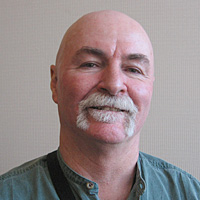Heartbeats from a drum, a whistle, a rattle of clapper-sticks and a chant from The Round Valley Feather Dancers echo over the Eel River. It's the first time in 100 years a blessing dance has been performed here. A half-moon floats in the sky. Dancers sway around a pyramid of fire. I blend into a scene that's timeless. Such ceremonies were performed on the Eel River for millenia.
Yet the event isn't truly timeless. It's the summer of 2010. This dance does not welcome Chinook salmon, the fish people, coming in abundance to the river. Instead, it seeks to halt their disappearance.
Once, four bustling runs of salmon thronged up the Eel, as well as native lampreys. Now, the fall Chinook who reach the upper Eel to spawn just number a few hundred. These salmon barely hang on by their fin-tips. The dancers seek to heal river wounds that include old siltation from logging, ranching and roads, and water grabs by people inside and outside the watershed. PG&E takes out 160,000 acre-feet per year, and sends it through a turbine and tunnel to cities and vineyards along the Russian River. In late summer and autumn, PG&E lets only a trickle flow down the Eel. The river is a string of shallow, over-heated pools.
Conservationist allies of the dancers hope to get the Eel's water back in the river. Fixes of similar problems at Mono Lake and the Trinity River show they have a case. But they don't have time. Legal proceedings drag on.
At the Eel River, a medicine man tells us to touch the water and pray, then join their dance. This should occur on a grander scale. Big parts of Northern California society -- including PG&E -- should participate voluntarily. Legal battles are important. But in the desperate months ahead, just one thing can save the Eel's totem salmon: magic.
